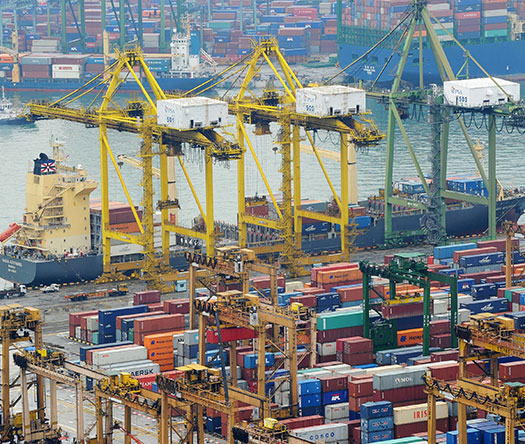Ports and harbors are essential elements of a regional economy. We work closely with our business partners to ensure that every maritime terminal delivered either reconstruction or new-build meets or exceeds their expectations. Environmental, social, financial, and economic elements are also key factors in our planning to ensure that the end result is both sustainable and commercially viable.
Ports also need to operate sustainably in a community, within a sensitive nearshore environment, and align with government and regional development agendas.
We as well as our associates have experience delivering port projects across the full project lifecycle for port users, operators and authorities, miners and oil companies, as well as contractors.
For any requirement inside the port gate, from policy and strategy, planning and approvals, projects, design, construction, operations, and maintenance, through to closure, we provide a fully integrated service across the Ports and harbors design, including lay-outing, breakwaters, navigation assessments, and wave penetration studies. In addition to Dry bulk terminals, oil and gas terminals, container terminals and dry port/intermodal terminals, multi-purpose terminals, and transshipment facilities.

Largely due to the growth in the world population and the consequent increase in global trade, there is growing demand for harbors whether this involves building new harbors or existing ports that need to optimize or expand their capacity.
We understand that trade drives port development, and that key success factors for a port development focus on the ability to operate cost efficiently, safely, and reliably.

Our expertise in marine infrastructure includes dredging, reclamation, breakwaters, and revetments, as well as cargo handling facilities and cargo storage facilities. Our teams are also focused on the coastal and marine environment, including winds, waves, currents, and sediment transport, an understanding of which is a critical ingredient in providing an efficient and reliable marine facility.
There are considerable differences in the efficiency of ports, both at individual and country levels. These differences can partly be attributed to scale and level of development but also on labor issues.
The coming years will be exciting times for infrastructure development, including port infrastructure, driving overall economic growth and bringing benefits to the local communities involved.
What is clear is that these developments require much more from the developer than technical acumen, especially at the early stages. Developments need to be embedded in larger master plans, looking at their economic, social and environmental impact as well as their effectiveness and efficiency of operations and long-term viability. In this way, we can be assured that if we build, they certainly will come and stay.
